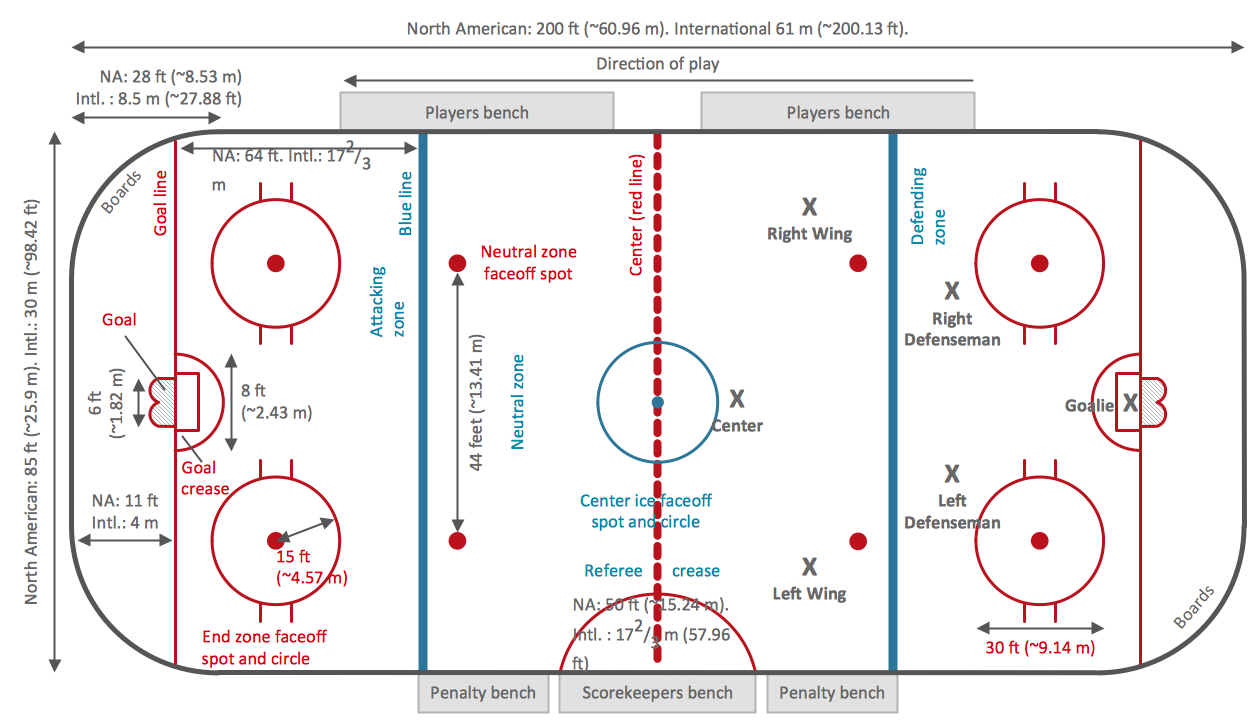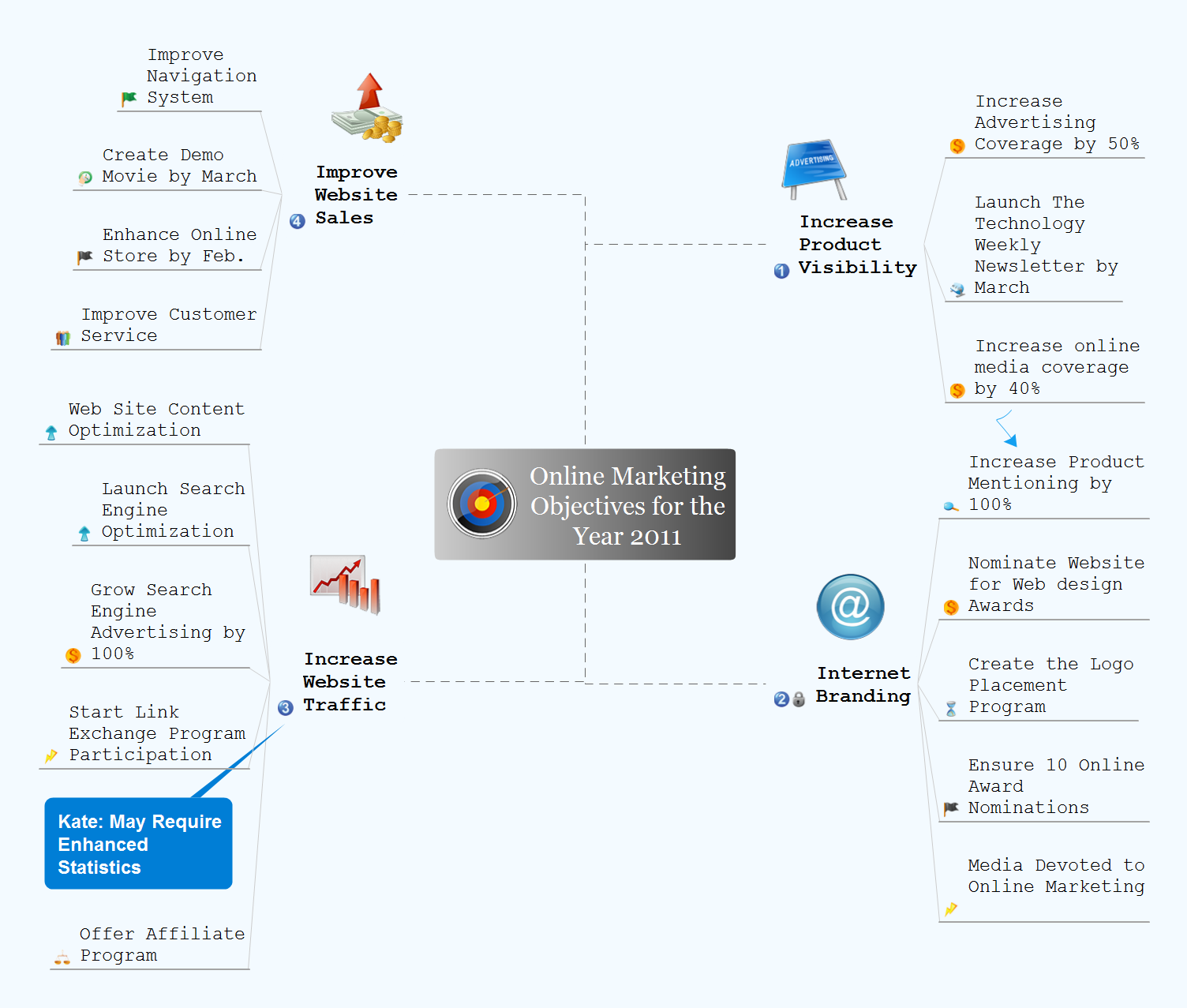2014 FIFA World Cup
Using the Soccer solution from ConceptDraw STORE can help any ConceptDraw DIAGRAM user create a needed soccer related drawing, such as soccer field plan, for example, and so to mention all the needed players on such map illustrating them with the help of the provided design symbols.
Sample 1. Soccer Solution
The “FIFA World Cup” is simply an international association football competition, in which the senior national teams of the members of the well-known FIFA take place. FIFA is known to be the sport's global governing body. The mentioned championship is awarded every four years. The first one happened in 1930 at the inaugural tournament. Nowadays, the current champion is Germany, winning its fourth title in Brazil.
There is a qualification phase during the mentioned competition, taking place over the preceding three years for determining which of the teams is qualified for the tournament phase — the World Cup Finals. There are all together 32 teams, including the host nation, competing in the tournament phase for the title.
The tournaments called “20 World Cup” have been previously won by 8 different national teams. Brazil is known to have won five times, being the only team to have played in every single tournament which took place recently. There were other World Cup winners — Italy and Germany, having four titles each of them. Argentina, as well as the inaugural winner Uruguay, have two titles each of them and France, Spain and England have the title as well, but only one each.
The World Cup is known to be the most prestigious association soccer tournament in the world. It is also known to be the most widely followed and viewed sporting event in the world. The Olympic Games are even not as popular as the FIFA World Cup. Thus, the audience of all the soccer matches of FIFA World Cup in 2006 was about 26.29 billion people, 715.1 million of which were watching the final match, which was the 9th of the population of our planet.
The very first world's international football match was a challenge one, played in 1872 between England and Scotland in Glasgow, resulting in a 0–0 score. The very first international tournament took place in 1884. After it was founded in 1904, FIFA always tried to arrange some international football tournament between different nations in 1906 in Switzerland outside the Olympic framework.
In 1908 in London, football became an official competition planned by The Football Association (FA), which was an England's football governing body. This event was originally used for the amateur players only, being regarded as a show rather than a competition. The England national amateur football team represented Great Britain winning the gold medals, repeated the feat in Stockholm later in 1912.
As the Olympic event between amateur teams, the Sir Thomas Lipton Trophy tournament was organized in Turin by Sir Thomas Lipton in 1909. There was another, Lipton tournament, which was simply a championship between individual clubs, but not national teams from different nations. Each of the mentioned nations represented an entire nation, so the competition was described as The First World Cup by that time. It featured the most prestigious professional club sides from different countries, such as Germany, Switzerland and Italy, but the English Football Association refused to be associated with that competition, declining the offer of sending a professional team. That is why Lipton invited West Auckland, which was an amateur side from County Durham in order to represent England instead of the English team. As a result, West Auckland won the tournament, returning in 1911 to defend their title again.
Eventually FIFA agreed to recognize the Olympic tournament as a "world football championship for amateurs" in 1914, taking responsibility for managing this event itself, leading to arranging the world's first intercontinental football competition in 1920 called “Summer Olympics”, where Egypt and thirteen European teams took place. Belgium won that competition and Uruguay won the next two Olympic soccer tournaments in 1924 and later in 1928. These were the first two open world championships, so 1924 is known to be the one when the FIFA's professional era started.
6 out of 8 champions won one of their titles playing in their own homeland, apart from Brazil, which finished as the “runners-up” after the game they played in 1950, losing their semi-final in 2014 against Germany. Spain in 1982 reached the 2nd round on home soil and England in 1966 and later France in 1998 won their only ones titles during their game as the host nations. Uruguay in 1930, then Italy in 1934, then Argentina in 1978 won their first titles as the host nations and Germany in 1974 won their 2nd title on their home soil.
Other nations have also been successful hosting the tournament. There were a few soccer teams having their best results when serving as hosts: Switzerland having it quarter-final in 1954, Sweden going for “runners-up” in 1958, Chile taking the 3rd place in 1962, South Korea having its fourth place in 2002 and Mexico playing in the quarter-finals in both 1970 and 1986. Nowadays (since 2010), South Africa is known to be the only host nation which failed to advance beyond the first round of the game of soccer.
Were selected 12 stadiums in Brazil which will host matches of the final tournament. Below you can see the sample designed in ConceptDraw DIAGRAM that shows the map of Brazil with marked cities in which those stadiums are situated. The opening match will take place in São Paulo at the stadium Arena Corinthians, and the final match — on the Estádio do Maracanã in Rio de Janeiro.

Sample 2. 2014 FIFA World Cup — Brazil Location Map
Two teams from each group will advance to knock out round, the round of sixteen. According to its results eight teams will take part in quarter-finals. Then will be the semi-finals matches with four playing teams. Top two teams with most points will qualify to the next round – final of 2014 FIFA World Cup.
Sample 3. 2014 FIFA World Cup — Knockout Stage
On this sample you can see the list of all 32 qualified teams of 2014 FIFA World Cup. This sample was created using the “FIFA World Cup 2014 team flags” library from the Soccer solution from the Sport area of ConceptDraw Solution Park.
Sample 4. 2014 FIFA World Cup — Qualified Teams
It’s very convenient to represent the teams qualified to 2014 FIFA World Cup on the map as you can see on the sample below. This is the result of 2014 FIFA World Cup Qualification — a series of tournaments organized by the six FIFA confederations in which 203 teams took part. Brazil as the organizer of the 2014 FIFA World Cup is automatically received a place in the final tournament.
Sample 5. 2014 FIFA World Cup — Qualification
The previously mentioned Soccer Solution can be also useful for making the maps using the pre-made examples of the countries which were involved in the mentioned soccer tournaments. Apart from the maps, with the aid of which you can always represent any needed country winning or losing some particular tournament, you can always also use the pre-made soccer field plans to mention the soccer players’ positions and so to describe the game, either it already took place or the one which is expected to happen in the future, so you can plan the positions of the soccer players for them to discuss the intentions and so to win the game.
Apart from “Soccer Fields” stencil library with five different templates of the football fields, there are also other design elements in other libraries all the ConceptDraw DIAGRAM users can always use any time they need them.













